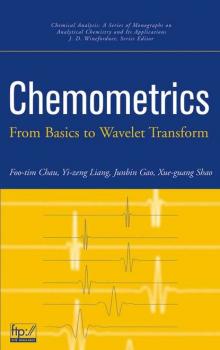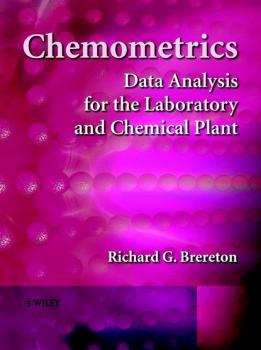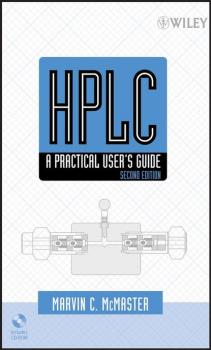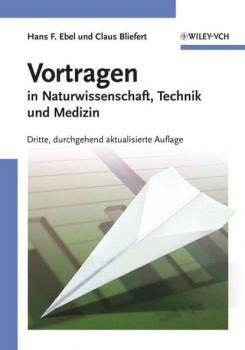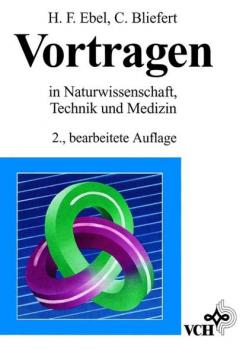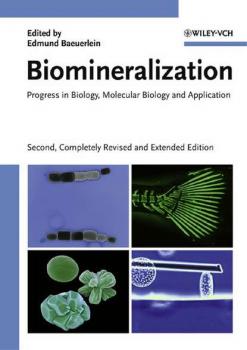ТОП просматриваемых книг сайта:
Прочая образовательная литература
Различные книги в жанре Прочая образовательная литература, доступные для чтения и скачиванияАннотация
Wavelet Transformations and Their Applications in Chemistry pioneers a new approach to classifying existing chemometric techniques for data analysis in one and two dimensions, using a practical applications approach to illustrating chemical examples and problems. Written in a simple, balanced, applications-based style, the book is geared to both theorists and non-mathematicians. This text emphasizes practical applications in chemistry. It employs straightforward language and examples to show the power of wavelet transforms without overwhelming mathematics, reviews other methods, and compares wavelets with other techniques that provide similar capabilities. It uses examples illustrated in MATLAB codes to assist chemists in developing applications, and includes access to a supplementary Web site providing code and data sets for work examples. Wavelet Transformations and Their Applications in Chemistry will prove essential to professionals and students working in analytical chemistry and process chemistry, as well as physical chemistry, spectroscopy, and statistics.
Аннотация
This book is aimed at the large number of people who need to use chemometrics but do not wish to understand complex mathematics, therefore it offers a comprehensive examination of the field of chemometrics without overwhelming the reader with complex mathematics. * Includes five chapters that cover the basic principles of chemometrics analysis. * Provides two chapters on the use of Excel and MATLAB for chemometrics analysis. * Contains 70 worked problems so that readers can gain a practical understanding of the use of chemometrics.
Аннотация
This Second Edition of the classic handbook details how to set up an HPLC system that capitalizes on the latest innovations. It covers new techniques in high-temperature, micro-flow, and ultra-fast chromatography, the linking of an HPLC to a mass spectrometer, and more. Complete with a CD-ROM and appendices, this guide has everything chromatographers need to know to confidently separate, identify, purify, and quantify compounds. Note: CD-ROM/DVD and other supplementary materials are not included as part of eBook file.
Аннотация
Ein guter Vortrag ist nicht nur eine Sache der personlichen Begabung oder Ausstrahlung des Redners. Dahinter steckt, nicht minder wichtig, viel harte Arbeit und das notige Wissen. Dieses Wissen um die beste Vortragstechnik haben die Autoren in anregender Form zusammengestellt und schopfen dabei aus ihrem eigenen reichen Erfahrungsschatz als Redner vor ganz unterschiedlichen Zuhorerschaften. Die dritte Auflage dieses Standardwerks zum wissenschaftlichen Vortragen wurde im Hinblick auf die modernen Bildbearbeitungs- und Projektionstechniken durchgehend aktualisiert und erganzt. Noch eindringlicher als zuvor gehen die Autoren auf die Wechselbeziehungen zwischen Vortragendem und Auditorium ein, sie machen die Horer zu Mitwirkenden. Dem Leser wird alle nur erdenkliche Hilfe bei der Vorbereitung fur seinen ersten – oder nachsten – offentlichen Vortrag zuteil, aber auch «alte Hasen» werden hier noch viel Neues entdecken. Stimmen zum Buch «au?ergewohnlich lehrreich und doch nicht belehrend; die lockere Art der Darstellung macht das Lesen zu einer wahren Freude» (Nahrung / Food) «eine au?erst hilfreiche Anleitung zur Bewaltigung technischer Klippen bereits weit im Vorfeld des offentlichen Ernstfalles» (Physik in unserer Zeit) «beschreibt mit bestechender Grundlichkeit und gro?em didaktischen Geschick, was bei der Vorbereitung und Durchfuhrung eines Vortrags alles falsch gemacht werden kann und daher zu beachten ist» (Arzneimittel-Forschung)
Аннотация
In the demanding professional world of today nothing counts more than the art of phrasing and presenting your own thoughts in words and pictures. Here the scope ranges from seminar lectures as a student to business meetings and public discussions and to being the official speaker at a conference. An experienced team of authors deals with all these demands (which may quite well be technical in nature) in this book. Their emphasis here is on speeches at conferences and congresses that are supported by visual aids. The First Edition of this book was received so well by scientists and business people that a Second Edition followed after only two years. Topics are dealt with in more detail, and further personal experiences of the authors in giving presentations are woven into the more theoretical information. A humorous style and numerous cartoons ensure that the material – in all its density – is presented in an entertaining and effective manner. Public speaking is, after all, not only a subject to be learned and taught – it is also a very human experience. In both of these areas this book offers assistance and stimulation.
Аннотация
Dieses einfuhrende Lehrbuch bietet Studenten der Chemie, Biochemie, Biologie und Pharmazie eine perfekt strukturierte und kompakte Ubersicht uber die faszinierende Welt der Terpene. Der Leser lernt die Systematik der Terpenstrukturen, Vorkommen, biologische, olfaktorische und pharmakologische Wirkungen kennen, aber auch ausgewahlte Totalsynthesen (z.B. von Insektenpheromonen und Baccatin III als Vorstufe des Antikrebsmittels Taxol) und wichtige industrielle Herstellungsverfahren fur Riechstoffe und Vitamin A werden prasentiert. Die zweite Auflage ist vollstandig uberarbeitet und enthalt einige zusatzliche Abschnitte, u.a. uber Biogenese, polycyclische Monoterpene, Cannabinoide, Ginkgolide und Geo-Hopane. Aus dem Inhalt: Terpene – Bedeutung, Bauprinzip, Biosynthese Hemi-, Mono-, Sesqui-, Di-, Sester-, Tri- Tetra- und Polyterpene biologische, olfaktorische und pharmakologische Eigenschaften Ausgewahlte Terpen-Synthesen Isolierung und Strukturaufklarung"
Аннотация
Nanotechnology is the key technology of the 21st century. The possibility to exploit the structures and processes of biomolecules for novel functional materials, biosensors, bioelectronics and medical applications has created the rapidly growing field of nanobiotechnology. Designed as a broad survey of the field, this book combines contributions from bioorganic and bioinorganic chemistry, molecular biology, materials science and bioanalytics to fathom the full scope of current and future developments. It is divided into four main sections: * Interphase Systems * Protein-based Nanostructures * DNA-based Nanostructures * Nanoanalytics Each chapter describes in detail currently available methods and contains numerous references to the primary literature, making this the perfect «field guide» for chemists, biologists and materials scientists who want to explore the fascinating world of nanobiotechnology.
Аннотация
Now over 50 % new contents. Incorporating the surprisingly rapid advances in this field since the publication of the successful first edition, this intensively updated and expanded new edition covers all the background as well as the latest results. Now organized according to the main biominerals, the book reflects the increasingly important biochemical aspects and medicinal applications, with four new chapters on biomineralization in mammals, including humans. The whole is rounded off with an entire chapter dedicated to modern methods, especially physical ones that have advanced the field over the last five years. The international team of renowned authors, under the direction of a leading expert in the field, provide first-hand research results from their own relevant fields. The result is an interdisciplinary must-have account, designed for a broad community of researchers.
Аннотация
Medicine, chemistry, physics and engineering stand poised to benefit within the next few years from the ingenuity of complex biological structures invented and perfected by nature over millions of years. This book provides both researchers and engineers as well as students of all the natural sciences a vivid insight into the world of bioelectronics and nature's own nanotechnological treasure chamber.
Аннотация
An introduction to the science of nanoparticles, from fundamental principles to their use in novel applications. As a basis for understanding nanoparticle behavior, the book first outlines the principles of quantum size behavior, nanoparticles architecture, formation of semiconductor and metal nanoparticles. It then goes on to describe the chemical syntheses of nanoparticles with defined characteristics, their structural, electrical and magnetic properties, as well as current methods to monitor these properties. Among others, the following nanoparticle-based applications are discussed: * Single-electron devices * Ultra dense recording media * Bioelectronic devices and sensors * Labeling of proteins, nucleic acids and other biomaterials. With its clear structure and comprehensive coverage, backed by numerous examples from the recent literature, this is a prime reference for chemists and materials scientists working with and developing nanoparticle systems.

